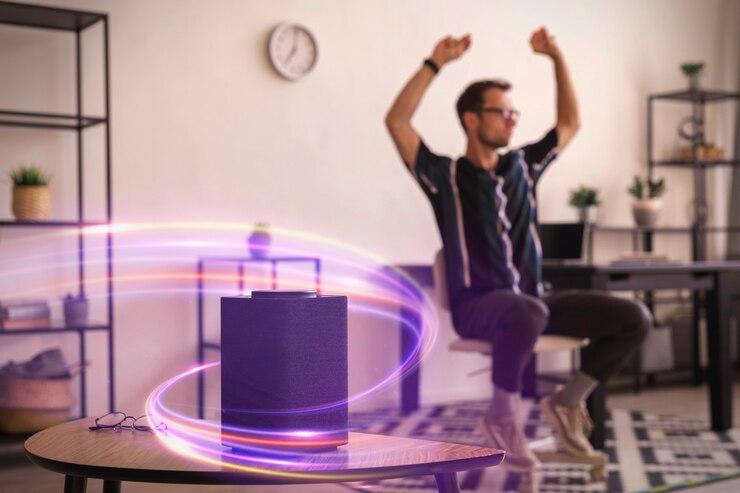In today’s hyper-connected world, we are constantly surrounded by electromagnetic fields (EMFs) from electronic devices, Wi-Fi routers, cell towers, and other wireless technologies. All these devices are causing health concerns, especially sleep problems. If you’ve been struggling with restlessness, insomnia, or unexplained fatigue, EMF radiation could be a contributing factor.
In this article, we’ll see how EMF exposure affects sleep and how you can detect and reduce it.
How EMF Radiation Affects Sleep
EMFs can interfere with brainwave activity, leading to increased restlessness and fragmented sleep. Many individuals report waking up feeling unrested or experiencing frequent nighttime awakenings when they sleep in environments with high EMF exposure.
Signs That EMF Might Be Disrupting Your Sleep
If you experience any of the following symptoms, EMF radiation could be impacting your sleep quality:
- Difficulty falling or staying asleep
- Frequent nighttime awakenings
- Feeling unrested even after a full night’s sleep
- Increased anxiety or stress levels
- Headaches or brain fog in the morning
- Unexplained fatigue during the day

How to Measure EMF Levels in Your Bedroom
To determine if EMF exposure is affecting your sleep, it’s essential to measure the radiation levels in your bedroom. Several EMF detection devices can help you analyze the amount of radiation present:
- Electromagnetic Field Meter
This device measures EMF emissions from various household electronics, including your Wi-Fi router, power lines, and cell phones.
- RF Signal Analyzer
This tool helps detect radio frequency (RF) radiation from wireless signals like Wi-Fi, Bluetooth, and cellular networks.
- EMF Spectrum Analyzer
A more advanced tool that provides a detailed breakdown of different EMF frequencies present in your environment.
- Wireless Radiation Monitor
This device continuously tracks EMF levels in real time, allowing you to monitor fluctuations throughout the day and night.
What Lets You Cycle Thru EMF Radiation Sources?
Many EMF detection devices come with features that let you cycle through different EMF radiation sources to pinpoint the highest exposure points in your home. These tools can differentiate between low-frequency electromagnetic fields from household appliances and high-frequency RF radiation from wireless devices.
By cycling through various measurement modes, you can identify the most significant sources of EMF pollution in your bedroom and take appropriate steps to reduce exposure.
Ways to Reduce EMF Exposure for Better Sleep
Once you have identified the primary sources of EMF radiation in your bedroom, consider implementing the following strategies to minimize exposure and improve your sleep quality:
Turn Off Wi-Fi at Night
- Wi-Fi routers emit a constant stream of RF radiation, which can interfere with your sleep. Consider turning off your router at night or using a wired internet connection.
Keep Electronics Away from the Bed
- Smartphones, tablets, and laptops should be kept at least a few feet away from your bed. If possible, avoid charging your devices near your sleeping area.
Use EMF Shielding Products
- Various EMF shielding devices like home harmonizers, cell chips, and protective bands can help reduce exposure to radiation while sleeping.
Switch to Low-EMF Lighting
- LED and CFL bulbs can emit electromagnetic fields. Consider using incandescent bulbs or low-EMF lighting alternatives.
Place Your Bed Away from Electrical Sources
- Avoid placing your bed against a wall with electrical wiring or near large appliances, as these can emit strong electromagnetic fields.
Use an EMF Kill Switch
- An EMF kill switch can shut off power to specific circuits in your home while you sleep, reducing overall EMF exposure.
Final Say
With the increasing presence of electronic devices and wireless technology, it’s more important than ever to be mindful of EMF exposure especially when it comes to sleep health. If you suspect EMF radiation is affecting your sleep, use tools like an electromagnetic field meter, RF signal analyzer, or EMF spectrum analyzer to measure exposure levels and take the necessary steps to reduce them.
By making small changes, such as turning off Wi-Fi at night, keeping electronics away from your bed, and using EMF solutions to protect yourself, you can create a sleep-friendly environment and improve your overall well-being. Take action today and experience deeper, more restful sleep free from electromagnetic interference.
FAQs
Can grounding sheets be dangerous?
Grounding sheets are generally safe but can be dangerous if improperly wired, exposing users to electrical faults or dirty electricity.
Do grounding blankets work?
Yes, grounding blankets can help reduce inflammation, improve sleep, and balance electrical charge by connecting the body to the Earth’s energy.
What are the side effects of grounding mats?
Side effects of grounding mats may include mild tingling, detox symptoms, EMF sensitivity, or discomfort if improperly used or wired.
Are grounding mats safe for pregnancy?
Grounding mats are generally safe for pregnancy, but consult a doctor to ensure they don’t interfere with medical conditions or devices.









